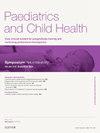外伤性脑损伤的神经保护
Q3 Medicine
引用次数: 0
摘要
创伤性脑损伤是全世界儿童创伤相关死亡和残疾的主要原因。为了改善损伤后的神经预后,实施神经保护措施,通过提供足够的脑灌注和氧合来限制继发性脑损伤。在这篇文章中,我们回顾了国际儿科指南中概述的一般支持和有针对性的神经保护措施,以及基于潜在病理的这些建议的生理基础。我们还讨论了PICU中的多模式神经监测。我们的目标是提供一种实用的方法来应对病情恶化的患者,并管理治疗过程中出现的并发症。本文章由计算机程序翻译,如有差异,请以英文原文为准。
Neuroprotection in traumatic brain injury
Traumatic brain injury is the leading cause of trauma-related death and disability in children worldwide. To improve neuro-outcomes after injury, neuroprotective measures are implemented to limit secondary brain injury by providing adequate cerebral perfusion and oxygenation. In this article we review the general supportive and targeted neuroprotective measures that are outlined in the international paediatric guidelines and the physiological basis for these recommendations based on the underlying pathology. We also discuss multimodal neuro-monitoring in the PICU. We aim to provide a practical approach on how to respond to deteriorating patients, and manage complications arising during the course of their treatment.
求助全文
通过发布文献求助,成功后即可免费获取论文全文。
去求助
来源期刊

Paediatrics and Child Health (United Kingdom)
Medicine-Pediatrics, Perinatology and Child Health
CiteScore
1.20
自引率
0.00%
发文量
70
 求助内容:
求助内容: 应助结果提醒方式:
应助结果提醒方式:


